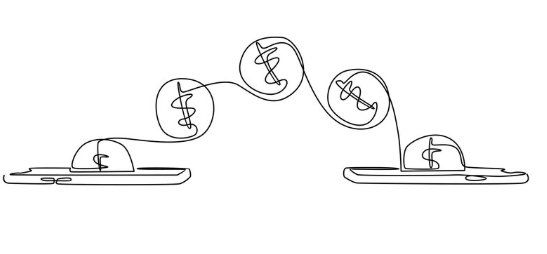Why Trading Risk Feels Like a Gamble for Most Indians
Struggling with trading risk? Learn how to match your risk tolerance with strategy and mindset to trade calmly and profitably in Indian markets. How much risk are you willing to take in trading?
This isn’t just a financial question—it’s a deeply personal one.
If you’re a 35-year-old working professional in India, dabbling in trading after office hours or on weekends, chances are—your heart races every time a stock you hold drops 2%. Not because you’re weak. Because you’re human.

From our childhood, we’re taught: “Paise bachao, risk mat lo”. We grow up watching our parents protect every rupee, choose fixed deposits over stocks, and panic at the slightest hint of market noise. No wonder, when it’s our turn to take risks, our default reaction is fear.
But here’s the thing—trading is built on risk. If you want the upside, you must flirt with the downside. The real challenge is this:
How do you take just enough risk that suits you, not your neighbor, not a social media influencer, not even your mentor—just you?
Let’s unpack this in a way that fits your mindset, your reality, and your goals.
💥 1. Why Trading Feels Risky—Because It Is
Trading risk tolerance
Trading isn’t risky just because prices move. It’s risky because you can’t control everything.
Real-life examples:
- Your internet goes down just as you’re about to sell.
- A stock tanks because an analyst said something negative on CNBC.
- Global news overnight ruins your perfect intraday setup.
Trading is unpredictable because life is unpredictable.
But here’s the twist:
Not all risks are created equal. Some are avoidable. Others are manageable. A few are just part of the game.
You’re not here to eliminate risk.
You’re here to understand and own your risk appetite.
💡 Your first job as a trader is not to chase profits. It’s to know your personal threshold for uncertainty.
🧪 2. Your Risk Personality: Seeker, Avoider, or Somewhere in Between?
Indian stock market psychology
Think of trading like driving:
- Some speed through the expressway at 120 km/h and feel alive.
- Others stick to the left lane at 60 and feel safe.
- And then there are those who want to drive—but fear the accident so much, they never even start the engine.
Which one are you?
Here’s a quick analogy:
- Risk Seeker → You love fast moves, can handle big swings, and often day-trade volatile stocks.
- Risk Neutral → You prefer swing trading or investing in momentum stocks, but with limits.
- Risk Averse → You hate drawdowns, need stability, and might prefer index funds or strong fundamentals.
There’s no wrong answer. But knowing your answer changes everything—from your strategy to your asset allocation to your sleep cycle.
📊 3. Practical Ways to Match Your Risk Tolerance with Strategy
Risk management in trading
If you’re risk-averse, you don’t have to avoid trading altogether. You just need better frameworks.
✅ Simple ways to reduce risk in your trades:
- Set Stop Losses → Decide the max you’ll lose before entering.
- Avoid Illiquid Stocks → If there aren’t enough buyers/sellers, your plan may fail.
- Diversify → Trade uncorrelated stocks. If one falls, others may hold.
- Position Sizing → Never bet more than 1-2% of your capital on a single trade.
- Stick to High-Volume, Nifty 100 Stocks → Safer entries, smoother exits.
🧠 Mindset Tip:
Reducing risk isn’t about being scared. It’s about staying in the game long enough to get better.
⚠️ 4. You Can’t Control Everything—And That’s Okay
Emotion control in trading
You can:
- Read charts
- Study price action
- Plan your entry and exit
But you can’t:
- Predict news
- Stop a flash crash
- Prevent a broker outage
This uncertainty is why most people quit trading.
Not because they lack skills—but because they didn’t build the psychological tolerance for randomness.
🎯 It’s not the loss that hurts—it’s the surprise.
🧘🏽 Solution? Train your brain.
- Expect surprises.
- Accept the unknown.
- Stay flexible.
📈 5. Stop Loss Isn’t Just a Tool—It’s Your Emotional Seatbelt
Stop loss strategy
Imagine you’re driving down a mountain road. Would you prefer:
- A car with brakes, even if you’re careful
- Or a car without brakes, just hoping you’ll steer well?
Stop losses are your brakes.
Set them:
- At logical support/resistance levels
- Where the market proves you wrong, not where you feel fear
Common mistake:
Setting stops too tight → Getting “wicked out” early
Setting stops too wide → Turning a bad trade into a nightmare
🎯 A good stop loss is where logic meets discipline.
🧠 What You Should Remember
- You can’t eliminate risk—but you can manage it.
- Match your risk-taking style with the right instruments.
- Don’t compare your risk tolerance with others.
- Risk less so you can stay consistent.
- A stop loss is your best friend—not your enemy.
📣 Call-to-Action
What’s your personal risk style—seeker, avoider, or somewhere in between?
Drop a comment and share your biggest “risk lesson” from the markets. Let’s build emotional strength together.
👉 Share this with a friend who needs to hear that it’s okay to not love risk—but it’s not okay to ignore it.

Why do I feel anxious even after placing a stop loss?
Because your brain still fears loss. Trusting your plan takes emotional training.
Can I trade if I’m naturally risk-averse?
Yes, use position sizing, index stocks, and longer timeframes to lower pressure.
What’s the riskiest mistake new traders make?
Going all-in without a plan or exit strategy.
Is risk management more important than strategy?
Absolutely. A poor strategy with good risk control beats the opposite every time.
How do I know if I’m taking too much risk?
If you can’t sleep, feel panic, or revenge-trade—your position size is too big.